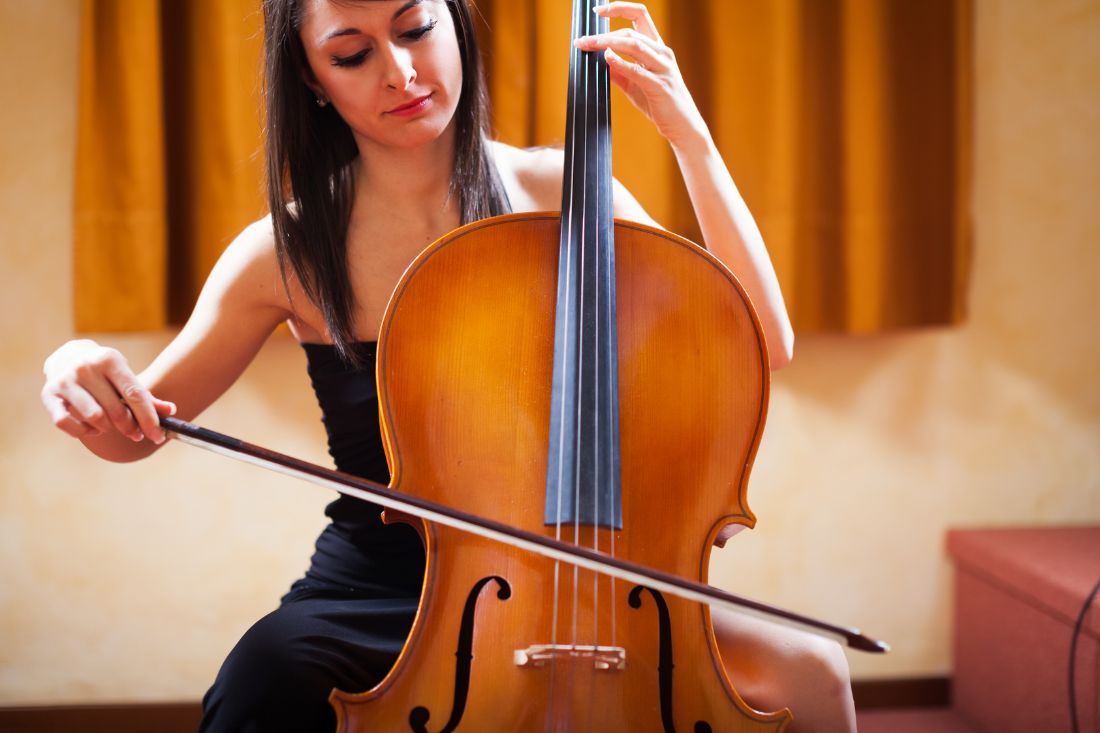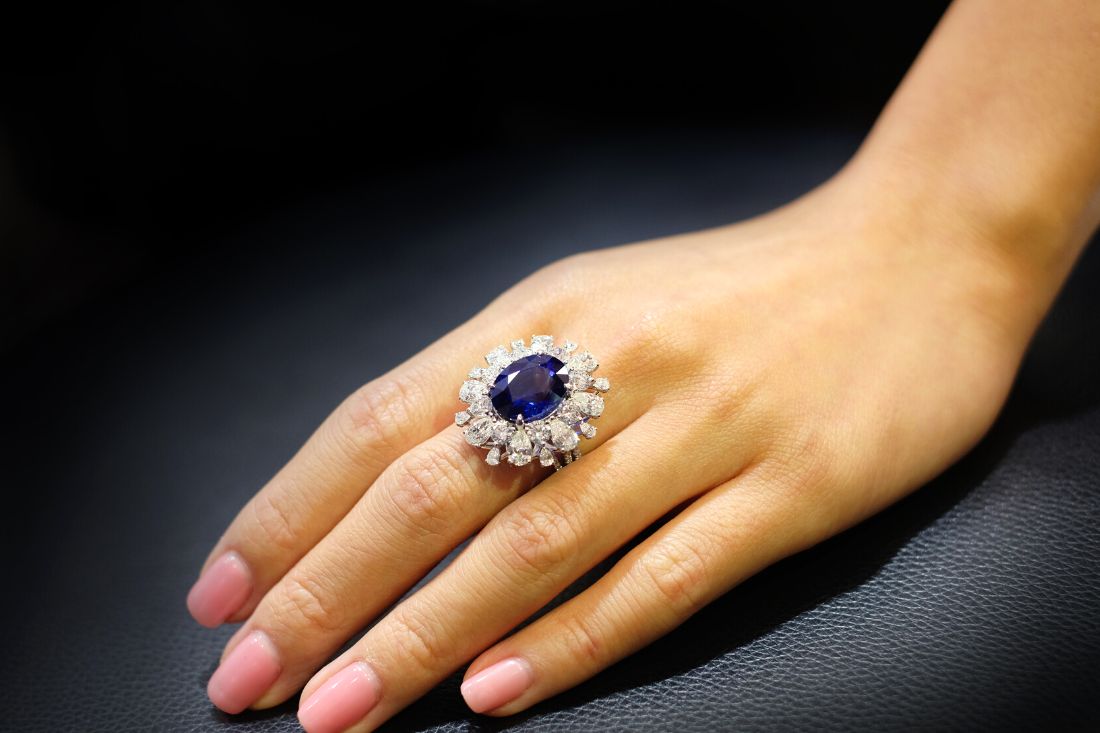The violin is one of the most popular instruments in the world, but why? We won’t string you along anymore – here are fun facts about violins for you!
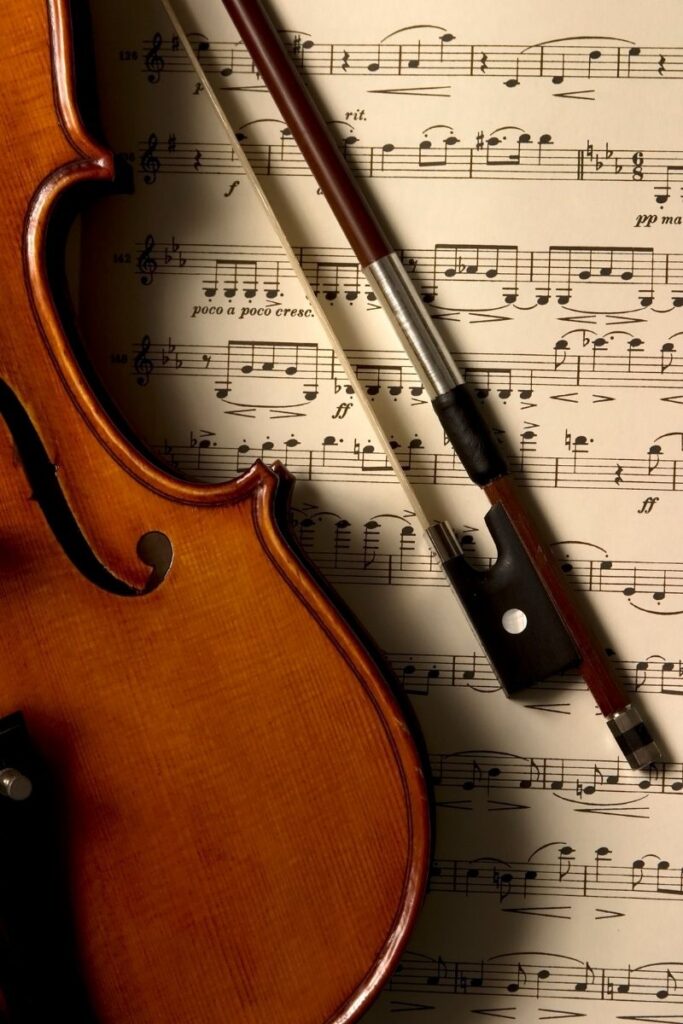
The violin is one of those rare instruments that can bridge all genres from classic music to heavy metal (yes, we really mean that!)
This small but dignified string instrument has been around for 500 years. In that time, the shape has evolved slightly, but the violin has remained an anchor in the music world.
While many violins are affordable, some have sold for astronomical amounts of money. We’re talking in the millions here which you’ll find out in our fun facts about violins.

The violin is in the string family. A musician plays it by pulling a bow across four strings. In its history, the bow and strings have been made from a number different materials. At one point, dried sheep guts were the base of the strings! This is different than other instruments, like the flute, which has remained largely the same.
Instruments made from bows and strings have been around for thousands of years. David (as in the David) danced to a harp in the Bible! This ancestor to the violin is just one of many throughout history.
From famous composers to their role in the orchestra, we think these violin facts will really surprise you. Just wait until you read about fact no.15!

Contents:
20 Fun Facts About Violins
1. Baa baa black sheep
Violin strings today are thankfully not organic. Originally, however, that was a different story. People made the first violin strings from sheep guts. These intestines were dried, then stretched and twisted to make a string. We can’t imagine what the smell would’ve been like!
2. Now they’re made of metal
Today, strings are made of more modern materials. Mostly, violin strings are made of stranded steel, solid steel, or plated steel. You can even get some violins completely made out of metal too.
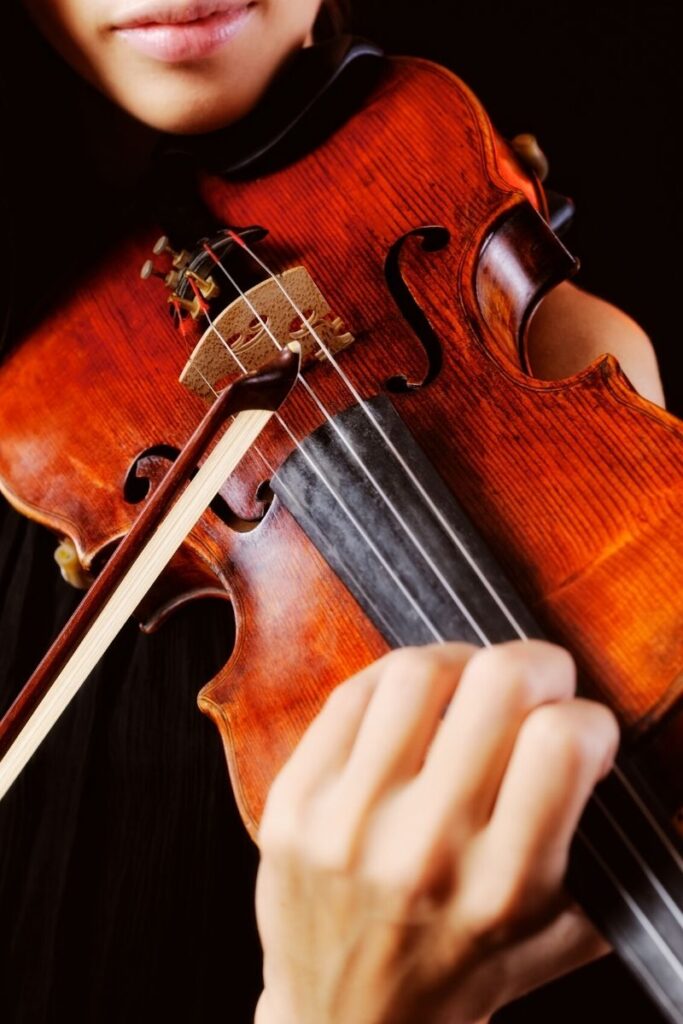
3. It takes a lot of hair
To play the violin, you need a bow to pull across the strings. A bow requires at least 150 individual hairs. Depending on the bow, these hairs are most commonly nylon or horsehair. However, there are other materials that are sometimes used as well.
4. One violin was incredibly expensive
Antonio Stradivari crafted the Messiah Stradivarius in 1737. At the time, he was a world-renowned violin-maker. He created this masterpiece during his golden period. It was never sold during his lifetime, actually.
To this day, very few musicians have played this instrument. The Messiah Stradivarius is in relatively new condition. Today, this violin is worth more than $20 million!
5. If you’re gonna play in Texas
If you’re singing this song in your head, you know the next line is, “You got to have a fiddle in the band.” While many people think a fiddle is different than a violin, they’re not. A fiddle is a colloquial term used to describe a violin, particularly in folk music.
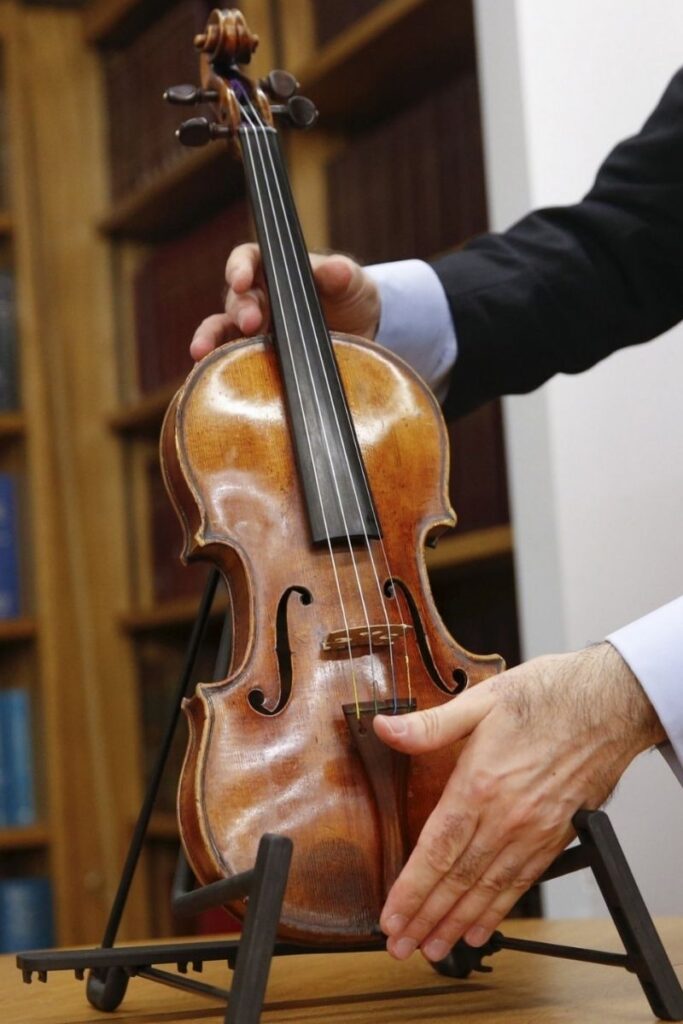
6. Family of four
There are four instruments in the string family. The strings are the largest instrument family in an orchestra. The smallest is the violin, then the viola, the cello, and finally the double bass is the largest.
The violin and the viola make higher-pitched sounds. The cello and double bass create a rich, deep sound. The shape of each of these instruments is similar with a curvy wooden body and neck. There are strings stretched over the body and neck and attached with tuning pegs and decorative heads.
7. They’re almost 500
Historians credit Andrea Amati with the design of the violin. Many consider this incredible musician the founding father of violins. In the 1500s, Amati perfected the design of the violin.
His creation inspired future masters, like Antonio Stradivari. The oldest violin crafted by Amati is from 1560. While he didn’t invent string instruments in general, you can thank Andrea the next time you play a modern-day violin.
8. It’s all right
There are many right things about the violin. To play this instrument, you pull the bow at a right angle across the strings. Most violinists play with their right hand, as well.
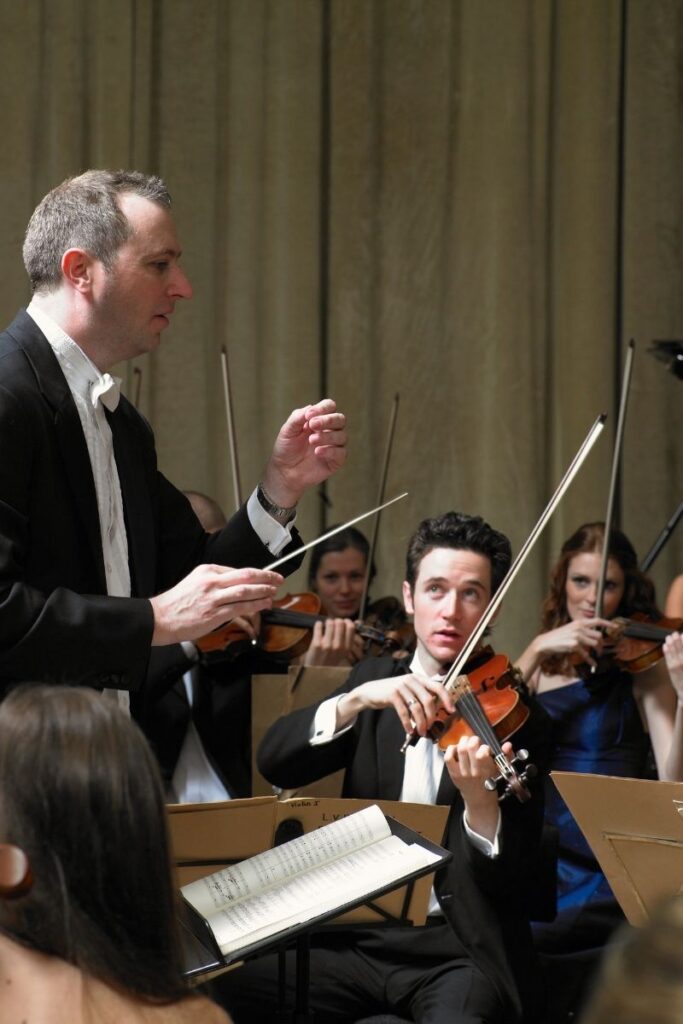
9. Violinists used to be conductors
Traditionally in orchestras, the first violinist was the conductor. This role, known as the concertmaster, was common until the early 1900s when conductors became the norm.
The musician in the first violin seat would direct the entire orchestra from their chair or in a standing position in front. Eventually, orchestras became too large. Plus, the double job of playing and conducting was very demanding. It’s no wonder musicians established a separate role for the composer.
10. It’s all about science
You might look at a violin and consider how it creates such a unique and beautiful sound. Or, you might simply be wondering why it’s called a STRING instrument when it is in fact made of wood.
All string instruments have a wooden body that is hollow inside. Then, there are strings tightly strung across the instrument. The violin creates sound when a player draws a bow across the strings and that sound vibrates inside.
11. The violin gets its name from an interesting place
Like many of our modern words, violin originates from a Latin word. “Vitula” is Latin for calf or cow. There are two likely reasons violin got this name. First, animal intestines, mainly sheep and cows, were the original source of violin strings.
Second, Sabine Vitula was the Roman Goddess of joy and victory. We think the second inspiration is a bit more poignant.

12. They come in many sizes
This violin fact is fit for everyone. No matter how big you are, there is a violin for you. The smallest violin is 1/64. Usually, kids as young as 2 or 3 years old can play this size. Kids play this size as they learn to speak!
13. Violins can come in XXL
While the smallest violin is for a two-year-old, the largest one ever made is for a much MUCH bigger person. In fact, the biggest violin ever made was over four meters long and five meters wide!
It took 15 violin makers to create this masterpiece. Talk about mega-size facts about violins.
14. You can cancel your gym membership
If you are a regular violin player, then you are getting quite the workout. In fact, playing the violin for one-hour burns around 170 calories.
Okay, okay. Maybe don’t cancel the gym membership. But professional violinists in an orchestra likely boast some serious upper body strength!

15. Understanding violins makes you a better soldier?
Fritz Kreisler was an Austrian and an incredible violinist in the 1930s. When World War II came around, he put his career on hold to serve in the military. He used his ear for music to aid the Austrian army.
Kreisler received a special mission to determine where the Russians placed their artillery, but using only his ears!
16. Violins are more complicated than meets the eye
While this instrument seems rather simple, it is actually quite complex. In fact, it takes more than 70 individual pieces of wood intricately pieced together to create a violin.
This violin fact is especially interesting when you consider many other musical instruments are not as complicated to build. The violin looks so simple though!
17. There have been famous violinists in history
Most people recognize Mozart as a composer and pianist. However, this musical master was also a very accomplished violinist. It was in his genes because Mozart’s father was a talented violinist and traveled Europe playing. Mozart went with his musical father throughout his childhood.
On top of the piano and violin, Mozart played the viola, as well. Many of his pieces feature technically advanced violin arrangements.

18. It’s not just for the classics
Many people hear a violin and think it’s only for classical music. This is not the case! Today, people play violins in chamber assemblies, concertos, and orchestras, among other things.
If you haven’t heard of Lindsey Stirling, then do yourself a favor and look her up. You’ll quickly discover this instrument really isn’t just for classical music!
19. Use your own hair in a bind
Sometimes you’re playing your violin and a string pops. Don’t worry, it happens. But what if you are out of replacement strings?
Thankfully, there is a simple solution. You can just glue strands of your hair together. It might take a while to create a string strong enough but it is possible!

20. The Red Violin
Violins are an interesting subject, and their history is included in many movies and books. For example, The Red Violin, is part fact, part fiction, but entirely entertaining.
This book-turned-movie tells the mysterious story of a violin that went missing for hundreds of years and turns up in modern times. We really recommend you watch it – it may even inspire you to learn more facts about violins.
Who wants more fun facts?

If you’re looking for some recommendations, these are a few of our favorite fact books to buy. We use these when planning fun trivia nights with family and friends!
Whether you are an old pro at the violin or are just here to learn a few violin facts, there’s no denying this is an incredible instrument.
Which of these facts about violins was your favorite? If you have any we missed, let us know in the comments below and we’ll add it to this article!


